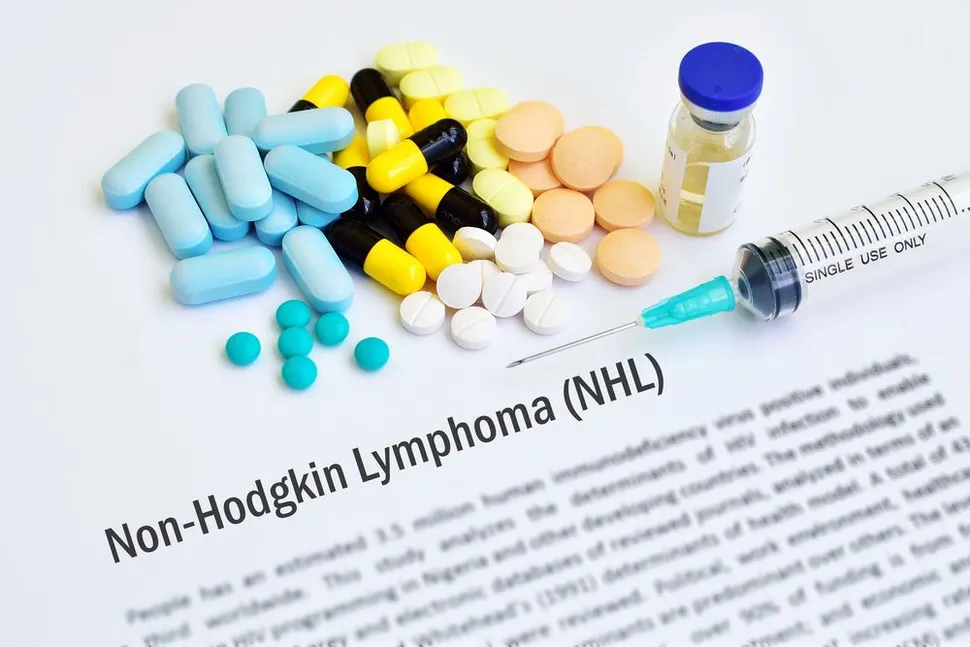Non-Hodgkin Lymphoma: Understanding Your Diagnosis (Aggressive vs. Indolent)

Lymphoma is a form of cancer that affects lymphocytes, a type of white blood cell. In patients with lymphoma, malignant (cancer) cells form in the lymph system. There are two main types of lymphoma: Hodgkin lymphoma and non-Hodgkin lymphoma (NHL).
What is Non-Hodgkin Lymphoma?
NHL is the most common type of lymphoma. The main difference between Hodgkin lymphoma and NHL is the type of lymphocytes affected. Patients are generally older when diagnosed with NHL compared with Hodgkin lymphoma, with the majority of patients aged over 55 years at diagnosis. Additionally, NHL can occur in lymph nodes anywhere in the body, while Hodgkin lymphoma usually arises in the upper body.
NHL can be further subdivided based on whether it grows and spreads quickly (aggressive) or slowly (indolent). Indolent lymphoma tends to have few signs and symptoms, whereas the signs and symptoms of aggressive lymphoma can be severe. The treatments for indolent and aggressive NHL are different.
Indolent NHLs include:
- Follicular lymphoma
- Lymphoplasmacytic lymphoma/Waldenström macroglobulinemia
- Marginal zone lymphoma
- Primary cutaneous anaplastic large cell lymphoma
Aggressive NHLs include:
- Diffuse large B-cell lymphoma
- Follicular large cell lymphoma, stage III
- Anaplastic large-cell lymphoma
- Extranodal natural killer-/T-cell lymphoma
- Lymphomatoid granulomatosis
- Angioimmunoblastic T-cell lymphoma
- Peripheral T-cell lymphoma
- Intravascular large B-cell lymphoma/intravascular lymphomatosis
- Burkitt lymphoma/noncleaved-cell lymphoma
- Lymphoblastic lymphoma
- T-cell leukemia/lymphoma
- Mantle cell lymphoma
- Post-transplant lymphoproliferative disorder
- True histiocytic lymphoma
- Primary effusion lymphoma
- Plasmablastic lymphoma
NHL can also be categorized based on whether B-cells, T-cells, or natural killer cells are involved.
What is follicular lymphoma?
Follicular lymphoma is the most common type of indolent NHL. It originates in B-cells and generally grows very slowly. It typically affects lymph nodes and can potentially spread to the bone marrow and spleen. Most patients diagnosed with follicular lymphoma are over 50 years old.
As follicular lymphoma grows slowly, treatment may not be necessary for many years, with up to 30% of patients never requiring treatment. Given the indolent nature and lack of symptoms of follicular lymphoma, close monitoring is the standard of care. If follicular lymphoma has resolved without treatment, patients are closely watched for signs of reoccurrence.
Further intervention may be necessary if symptoms reappear after initial remission or treatment. Occasionally, follicular lymphoma can transform into a more aggressive form of lymphoma, such as diffuse large B-cell lymphoma.
Key takeaways
- NHL is a type of cancer where malignant cells form in the lymph system
- NHL can grow and spread quickly (aggressive) or slowly (indolent)
- Follicular lymphoma is a B-cell, indolent type of NHL
Sign up for our newsletter to stay up-to-date with the latest developments in the treatment of follicular lymphoma, and register for our upcoming educational events!
SUBSCRIBE TO HEALTHTREE FOR FOLLICULAR LYMPHOMA
Sources:
Lymphoma is a form of cancer that affects lymphocytes, a type of white blood cell. In patients with lymphoma, malignant (cancer) cells form in the lymph system. There are two main types of lymphoma: Hodgkin lymphoma and non-Hodgkin lymphoma (NHL).
What is Non-Hodgkin Lymphoma?
NHL is the most common type of lymphoma. The main difference between Hodgkin lymphoma and NHL is the type of lymphocytes affected. Patients are generally older when diagnosed with NHL compared with Hodgkin lymphoma, with the majority of patients aged over 55 years at diagnosis. Additionally, NHL can occur in lymph nodes anywhere in the body, while Hodgkin lymphoma usually arises in the upper body.
NHL can be further subdivided based on whether it grows and spreads quickly (aggressive) or slowly (indolent). Indolent lymphoma tends to have few signs and symptoms, whereas the signs and symptoms of aggressive lymphoma can be severe. The treatments for indolent and aggressive NHL are different.
Indolent NHLs include:
- Follicular lymphoma
- Lymphoplasmacytic lymphoma/Waldenström macroglobulinemia
- Marginal zone lymphoma
- Primary cutaneous anaplastic large cell lymphoma
Aggressive NHLs include:
- Diffuse large B-cell lymphoma
- Follicular large cell lymphoma, stage III
- Anaplastic large-cell lymphoma
- Extranodal natural killer-/T-cell lymphoma
- Lymphomatoid granulomatosis
- Angioimmunoblastic T-cell lymphoma
- Peripheral T-cell lymphoma
- Intravascular large B-cell lymphoma/intravascular lymphomatosis
- Burkitt lymphoma/noncleaved-cell lymphoma
- Lymphoblastic lymphoma
- T-cell leukemia/lymphoma
- Mantle cell lymphoma
- Post-transplant lymphoproliferative disorder
- True histiocytic lymphoma
- Primary effusion lymphoma
- Plasmablastic lymphoma
NHL can also be categorized based on whether B-cells, T-cells, or natural killer cells are involved.
What is follicular lymphoma?
Follicular lymphoma is the most common type of indolent NHL. It originates in B-cells and generally grows very slowly. It typically affects lymph nodes and can potentially spread to the bone marrow and spleen. Most patients diagnosed with follicular lymphoma are over 50 years old.
As follicular lymphoma grows slowly, treatment may not be necessary for many years, with up to 30% of patients never requiring treatment. Given the indolent nature and lack of symptoms of follicular lymphoma, close monitoring is the standard of care. If follicular lymphoma has resolved without treatment, patients are closely watched for signs of reoccurrence.
Further intervention may be necessary if symptoms reappear after initial remission or treatment. Occasionally, follicular lymphoma can transform into a more aggressive form of lymphoma, such as diffuse large B-cell lymphoma.
Key takeaways
- NHL is a type of cancer where malignant cells form in the lymph system
- NHL can grow and spread quickly (aggressive) or slowly (indolent)
- Follicular lymphoma is a B-cell, indolent type of NHL
Sign up for our newsletter to stay up-to-date with the latest developments in the treatment of follicular lymphoma, and register for our upcoming educational events!
SUBSCRIBE TO HEALTHTREE FOR FOLLICULAR LYMPHOMA
Sources:

about the author
Dylan Barrett
Dylan is a freelance medical writer based in Cork, Ireland. He previously worked in independent medical education while living in London and is now collaborating with HealthTree to develop resources for blood cancer patients. His background is in genetics, and he has a passion for innovative scientific research. In his spare time, he enjoys sports, traveling, and spending time with his family and friends.
More on Core Education
Trending Articles
Get the Latest Non-Hodgkin Lymphoma Updates, Delivered to You.
By subscribing to the HealthTree newsletter, you'll receive the latest research, treatment updates, and expert insights to help you navigate your health.
Together we care.
Together we cure.
3x Faster.









